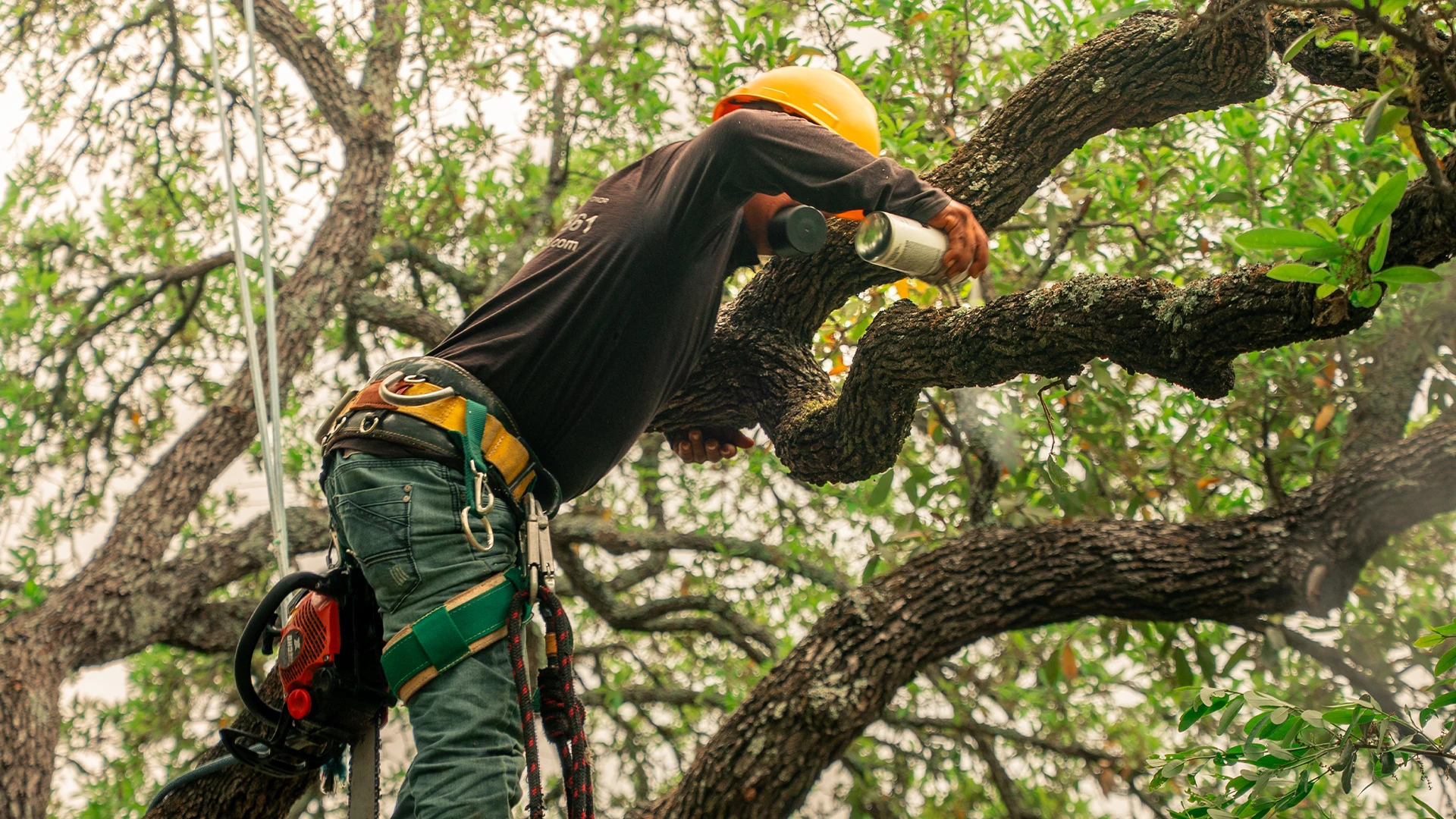Maintaining healthy, beautiful trees requires attentive trimming crafted for each tree’s specific needs. This exhaustive guide details locating and profiting from top-notch tree trimming services in Austin. We will investigate all you need to know about selecting and taking advantage of professional tree trimming experts in Austin. From identifying issues to scheduling appointments and understanding techniques, tree care demands a nuanced approach. Costs vary depending on scope, though frequent small prunings prove more economical than rare drastic cuts. Ask about credentials and experience to find an arborist attentive to trends and safety standards. Satisfied customers attest these specialists breathe new life into even neglected landscapes through individualized solutions.
Understanding the Complex Art of Thoughtful Tree Maintenance: More Than a Simple Shearing
The Intricate Science Behind Arboreal Well-Being
Tree maintenance is a practice that delves far deeper than carelessly swinging a saw and thoughtlessly severing. Fundamentally, the science of dendrology is comprehending the nuanced biology of arboreal organisms, including their expansive development, their responses to hardships, and their interplays with environs. Trees undergo a remarkable process of photosynthesis, transmuting daylight, carbon dioxide, and water into vitality for extending growth. Keeping a tree’s wellness involves confirming that this critical process remains unhindered. Considered pruning eases light permeation, advances airflow, and allows for optimized spacing between branches, ultimately backing wide growth and longevity.
Additionally to advancing overall health, strategic maintenance can help mitigate disease. Trees can fall prey to various pathogens, pests, and environmental stresses, which can lead to irreparable harm. By removing dead or diseased limbs during upkeep, you decrease the risk of these issues proliferating. Healthy trees also tend to have more robust intrinsic defenses, enabling them to thrive better amid the distinctive challenges posed by the Austin microenvironment.
Pruning techniques considerably impact both growth patterns and visual appeal. For instance, topping, which cuts off a tree’s main stem, has fallen out of favor due to weak branch formation that heightens vulnerability to damage. More judicious methods like crown thinning, raising and reduction can strengthen structure and symmetry while promoting health. Such practices dictate long-term development, ensuring trees remain valued for aesthetics and property worth.
Moreover, selective trimming can shape trees to complement surrounding architecture and landscaping. For locales renowned like Austin for scenic vistas and lush natural areas, balancing appearance with well-being is paramount. Whether majestic Live Oaks, elegant Cedar Elms or vibrant Red Maples, understanding each variety’s response to pruning can elevate surroundings regarding health and design.
The Significance of Seasonal Variations in Pruning Practices
The ideal timing for pruning trees proves just as crucial as the approaches undertaken. Seasonal fluctuations play a profound role in a tree’s growth cycles and determine when and how one should plan pruning. Early spring, right before new growth commences, is widely seen as one of the most advantageous times to trim numerous varieties, allowing for efficient healing and vigorous expansion. In contrast, late summer pruning can benefit certain types, particularly those that may need to redirect energy in response to environmental stresses. Understanding the lifecycle and growth patterns of your specific species, as well as how to factor in local climate variables, ensures achieving the best outcomes.
In Austin specifically, the subtropical climate presents variations in growing seasons, making the timing of trimming even more consequential. For instance, early spring can also herald stormy weather, which could impose additional strain on trees if pruned too soon. Hence, local arborists are generally best positioned to evaluate the unique attributes of your trees and the Austin region, skillfully scheduling pruning to yield optimal results without compromising health.
Why Opt for Professional Tree Trimming Services in Austin?
The Expertise You Can Depend On: Certified Arborists Illuminated
When it comes to tree trimming, the expertise furnished by certified arborists cannot be overemphasized. Certified arborists have undergone rigorous preparation and testing to guarantee a comprehensive understanding of tree biology, safety protocols, and the optimal practices for sustaining tree health. They hold an important role in safeguarding and enhancing landscapes, blending science with a genuine appreciation for nature. In Austin’s diverse ecosystem, local arborists possess a nuanced comprehension of the specific tree species, diseases prevalent in the area, and the unique challenges posed by urban living.
This expertise is especially essential in situations requiring comprehensive evaluations and personalized recommendations tailored exactly to the particular needs of your landscape. A certified arborist not just pinpoints potential problems but may also lay out a long-term tree care plan incorporating suitable trimming cycles, preventive steps against pests and sicknesses, and insights about effective soil administration. With such proficiency, homeowners can feel assured in their decision making, realizing that they’re protecting the health and beauty of their trees for generations ahead.
Safety First: The Hazards of Do-It-Yourself Tree Upkeep
Tree trimming, despite appearing straightforward, can pose significant safety risks. Using ladders, power instruments, and huge branches creates an array of dangers, like the possibility for falls, accidents with gear, or perhaps injury from falling debris. Data highlights that many people are hurt every year while trying DIY tree maintenance, a factor which underscores the importance of trusting this undertaking to qualified professionals who prioritize safety. Professional arborists are experienced in the most recent safety protocols, using the proper equipment and methods to conduct their work with minimal risk.
Moreover, DIY tree trimming often leads to improper techniques that may jeopardize the health and aesthetics of the tree. An erratic cut can make openings for pests to invade or disrupt the tree’s natural growth pattern. Engaging with an expert service not just alleviates these dangers but also makes sure that trimming is performed with a discerning eye towards sustaining a tree’s overall integrity, growth potential, and beauty—an invaluable investment in your property’s long term value.
Time and Cost Efficiency: Investing in Professional Tree Care Services
Many homeowners initially view do-it-yourself tree maintenance as a straightforward way to save money. However, taking on such tasks without proper training often leads to even greater expenses down the road. Amateur mistakes can result in harming tree health and structure, necessitating costly repairs or full removals. On the other hand, professional arborists accomplish trims and cleanups efficiently through years of hands-on experience. They work swiftly and safely according to industry standards. DIY tree work regularly confounds novices, with tasks taking far more time than expected.
Moreover, paying for certified tree experts incorporates the convenience of their specialized gear usually unavailable to the average person. Services frequently wrap debris carting into the price, relieving homeowners of messy yard cleanups. Experienced arborists also provide post-service tree care to ensure long-term vitality, offsetting the initial investment. Considering preserved home aesthetics and landscape well-being, professional tree maintenance emerges as a worthwhile long-term financial decision.
Assessing Your Trees’ Specific Needs
The initial consultation lays the groundwork for proper tree stewardship. Certified arborists thoroughly inspect each tree, carefully noting species traits, age, size, health indicators, and environmental stresses. But their evaluations aim higher than solely imminent trims. Experts also look for underlying issues that may impact a tree’s future, enabling proactive care plans. Only through such detailed assessments can service providers fully understand what steps will optimally sustain trees for years to come.
During our discussion, conversations will often revolve around your unique aesthetic desires and the well-being of your trees. Arborists will provide recommendations tailored to each tree’s needs while respecting regulations and best environmental methods. An informed dialogue now establishes expectations for future care and allows homeowners to participate actively in their trees’ journeys. Knowledge is power, understanding what trees require ensures harmony between their needs and your landscaping vision.
Eco-Conscious Techniques: Sustainable Pruning Approaches
As talks about sustainability evolve, tree trimming experts increasingly adopt eco-friendly practices. Adapting sustainable techniques means comprehending pruning’s immediate and lasting impacts on ecosystems. Using natural fertilizers after, efficient techniques limiting waste, and native species promotion aid the environment.
Additionally, biodegradable, flora and fauna-safe tools and products let arborists contribute positively to ecology. Eco-aware pruning can also prioritize mature trees, maintaining biodiversity especially in urban areas like Austin. Choosing a service emphasizing sustainability enhances properties and the area’s overall environmental health.
While tree trimming provides benefits, conscientious aftercare sustains long term advantages. Arborists recommend monitoring, watering and preventative steps aligned with species traits. Peculiar to each tree and climate, personalized protocols assure thriving landscapes for years.
Establishing routine checkups with certified professionals not just aids short term recovery but cultivates longstanding health through proactive maintenance. Tailored trims shape trees suited to native habitats while regular care fosters sturdy, visually pleasing canopies and ecological services.
Distinctive to Austin, indigenous varieties each necessitate unique shaping befitting natural forms
Among these, spreading Live Oaks endure best with judicious thinning versus severe heading which harms their rugged constitutions. Alternatively, stately Pecan profit from seasonal pruning encouraging bountiful crops and balanced silhouettes. Local specialists know how to achieve equilibrium between aesthetics and welfare for native flora.
Tree species found throughout Austin must adapt to the various microclimates
Leading to fluctuations in necessary care depending on habitat. Consulting local experts illuminates the specific needs of species, guaranteeing approaches are tailored not just to type but also environmental residence, yielding a more robust maintenance strategy.
Adjusting Pruning Practices to Regional Climate: Optimal Tree Care Techniques
Underestimating climate adaptation in trimming, especially in Austin with varying temperatures, would be misguided. Summers necessitate divergence from milder winters as drought and sunlight stresses impact trees. Comprehending impacts empowers arborists to recommend schedules such as pre-summer pruning minimizing heat stress and protections during typical fall/winter storms.
Additionally, soil administration improving water retention bolsters health during dry spells. Implementing mulch, watering adjustment, and bio-fertilization addressing soil health are all professional considerations to ensure sustainability and ecosystem well-being, preserving character-defining trees.
Preserving Austin’s Natural Beauty: The Importance of Responsible Tree Trimming
Austin is renowned for its commitment to maintaining the natural beauty and ecological integrity of its landscapes, thus emphasizing the importance of responsible tree trimming. Practices involving proper techniques and a deliberate consideration of the local ecosystem’s well-being are crucial for responsible tree trimming. This involves pruning that respects wildlife habitats, compliance with often intricate local regulations regarding tree removal or alterations, and fostering Austin’s biodiversity through amply maintained green spaces.
Professional arborists advocate for practices that safeguard not only the trees themselves but also the delicate balance established within the urban ecosystem as a whole. Integrating education concerning invasive species, habitat preservation techniques, and propagating local native plants into tree trimming service in Austin ensures a holistic approach, permitting property owners to play a vital role as stewards of their surrounding environment. The choices made as a community regarding tree care have far-reaching ramifications on preserving the unique beauty of Austin’s landscapes for generations yet to come.



